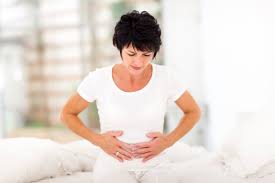 Fibroids are benign tumors that 30% of women will experience at some point in their life time. Many of these fibroids do not cause any symptoms, while other women suffer from debilitating symptoms that keep them from social situations. These tumors take up space in the uterus. Unfortunately, because more and more women are delaying their childbearing until their late 30s these fibroid tumors are also affecting fertility.
Fibroids are benign tumors that 30% of women will experience at some point in their life time. Many of these fibroids do not cause any symptoms, while other women suffer from debilitating symptoms that keep them from social situations. These tumors take up space in the uterus. Unfortunately, because more and more women are delaying their childbearing until their late 30s these fibroid tumors are also affecting fertility.
Researchers now understand that fibroid tumors are dependent upon estrogen levels in the blood. In other words, the estrogen hormone is required to be present in order for these tumors to continue to grow and expand. There are five different types of fibroid tumors that are named for the area of the uterus in which they are located.
Fibroid tumors are actually excessive growth in the muscle of the uterine wall. They are not cancers and are not believed to be precancerous. In other words, they do not grow into a tumor that may spread to another part of the body. In very, very rare cases, fibroids that begin to grow very rapidly can become cancerous. (1)
In many cases these fibroid tumors begin to resolve or decrease as a woman enters menopause. Women who develop fibroids during menopause, or after menopause, are at greater risk for developing fibroids that are precancerous.
Interestingly it turns out that fibroids and menopause have usually been mutually exclusive. This is because the levels of estrogen in the body fall dramatically during menopause and therefore no longer stimulate the growth of the fibroid tumors. This loss of hormonal stimulation usually leads to the demise, or death, of these tumor growths.
Although some researchers believe that 30% of women will experience fibroids in their lifetime others believe that this number is much higher because many women will not experience symptoms at all. Fibroids can be the size of a microscopic seed or exceed the size of a small basketball. It is easy to see why tiny tumors may not be noticed on examination nor will produce any symptoms in women that are recognizable.
Scientists are still unsure of how and why fibroids grow. Physicians have found that those who grow after menopause have a higher potential of becoming cancerous and that fibroids are dependent upon estrogen for stimulation. Researchers have also identified the specific risk factors that increase the potential that a woman will experience fibroids in her later years. They appear to be more common among African Americans or African Canadian women, suggesting that there may be a genetic link. Women who have close female relatives that also have fibroids are more likely to develop tumors that results in symptoms. (2)
Women who experience fibroids often have heavy menstrual bleeding that can result in anemia. They will also have feelings of heavy pressure in the lower abdomen, bladder problems, bowel problems and lower back pain. Some women will experience constipation, bloating, pain and pain during intercourse. When the fibroids grow large it is very possible to feel a hard spot in the center of the abdomen where the fibroids are sitting.
Some researchers now hold a theory that xenoestrogens, a molecule similar in structure to estrogen, found in meats, pesticides and plastics, have impacted the number of women who are suffering from fibroids. There has been an increase in the number of women who continue to have difficulty with fibroids following menopause which may be linked to the increased amount of chemicals they ingest from milk, meat, dairy and pesticides long after menopause has come and gone.
Menopause and fibroids have always been mutually exclusive because of the dependence of fibroids on the presence of estrogen. Unfortunately, because of the amount of estrogen, or xenoestrogens, that are available in dairy products and environmental toxins, some women continue to experience tumors that do not reduce in size.
(1) WomensHealth.gov: Uterine Fibroids Fact Sheet
http://www.womenshealth.gov/publications/our-publications/fact-sheet/uterine-fibroids.cfm#top
(2) WomensHealth.gov: Minority Women’s Uterine Fibroids
http://www.womenshealth.gov/minority-health/african-americans/uterine-fibroids.cfm


Leave a Reply